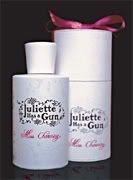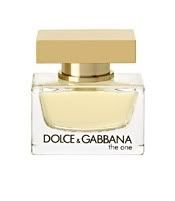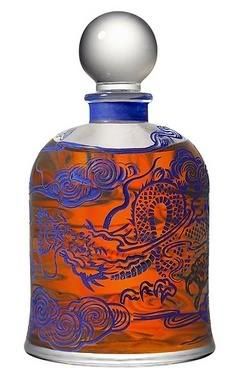Friday, November 3, 2006
The Wonders of Amber: Perfumery Material of Soft, Oriental Character
Essentially, there is no such thing as an amber essential oil. Essential oils are oils from plants in their purest form, distilled or otherwise extracted from a single plant species. Fragrant amber is a combination of several different botanical sources (or in ambergris’s case -which is a completely different material- a product of animal origin, more on which later). There is no one plant from which amber comes from, although some claim it comes from a special tree growing in the Himalayas. This is probably imaginative copy. Fir tree resin, in its regular, non-fossilised form is actually used in perfumery sometimes and offers a rather sweet, warm and deep smell that serves as a base to anchor the other ingredients that are placed on top of this less volatile ingredient. But it's not the usual reference.
The concept of "amber" on the whole is in fact an olfactory convention of the late 19th century and became a perfume "genre" at that time with the invention of vanillin (synthetic vanilla, as known from patisserie to most of us) added to the time-honored use of labdanum. This is for all practical purposes what we refer to as the "amber note": labdanum and vanillin.
"Ambery" is the general term -according to the French system - to describe the perfumes that fall in the oriental group and that have a warm, slightly powdery, erotic, animalic tonality in them ("parfums ambrés"). We could classify Shalimar, Obsession, Must de Cartier or Moschino for women (original) in that category. This doesn't have to do with the actual ingredients, it’s rather a figure of perfumery speech, although of course the perfumes of this category do include "ambery notes".
Please note however that NOT all "orientals" however are "ambery": the opoponax-based or balsamic/resinous fragrances in the Oriental spectrum (Opium or Youth Dew for instance) can eschew significant use of pure "amber bases" (see below for actual ingredients for this) in lieu of other accords within the variety of materials in hand. Simply put, the "oriental group" of fragrances is more encompassing than the "amber orientals".
The following materials do NOT have a relation with "amber" as the term in perfumery is used:
*A sort of "amber oil" comes from the Baltic amber; the fossilized resin from a prehistoric tree called Pinus Succinifera, a pine species. Amber dust is a by-product of the fossil amber industry (which caters for jewels) and the material renders an amber oil through a process called destructive distillation of fossilized amber. The oil yielded contains succinic acid which is useful in health products, however due to its uninviting aroma it’s useless in perfumery. Therefore there is no such thing as "amber fossil" used in perfumery.
*Ambrette seed is another ingredient often mixed up with amber that gives however a musk note in perfumes. Coming from the plant Hibiscus Abelmoschus , the seeds are distilled to give a waxy substance that is then treated with an alkaline medium to give finally the "absolute”. The smell is slightly musky and soft, warm, peachy and snugly; used in many luxury perfumes.
*Ambergris is the legendary ingredient often used in relation to "amber" (as ambra/amber appear shortened sometimes, since ambergris in French means “grey amber”).
Ambergris comes from a cured secretion from sperm whales; the whale secretes a substance to heal its stomach from the scratches of the cuttlefish it swallows when feeding. This gets out through the gastrointestinal system and is left floating on the ocean for years. The floating part is what gives it its characteristic slightly salty and warm , sensuous smell. It is animalic in a subtle way and retains its scent for centuries, just like musk.
So what actually goes into the production of amber and ambery perfumes, you might ask at this point.
The answer is two-fold.
Natural ingredients are used by natural perfumers to create an amber base without actual ambergris (and without synthetic vanillin, as per above), meaning a perfume base that smells warm, erotic and sensual or simply an oil mix.
Usually these include:
1.Labdanum: Cistus labdanum or rockrose is a gum resinoid from the common in the Mediterranean rockrose bush. In the past a long double rake (ladanisterion) was used to comb off the gum from the beards of goats grazing on the bushes, especially in Crete, Greece. It has been used in incense since antiquity. Today the twigs and leaves are boiled to yield the gum. The aroma is the closest thing to real ambergris in the plant kingdom.
2.Benzoin: A secretion of the tree Styrax tonkinense, a tropical asian tree, in the form of tears, which is secreted when the tree is injured. Two varieties exist; Siamese and Sumatran, the former drier and more powdery, the latter sweeter, more caramel like.
Its aroma is sweet and warm and evolves into powdery balsamic.
3.Styrax levant (Liquidamber orientalis): Another resinoid from a tree, it smells a bit like glue with a cinnamon edge. It is important in the creation of amber chords and has a rounding effect.
4.Natural vanilla extract from the Madagascar vanilla orchid can be used. (Perfumers dabbling in synthetics opt for vanillin instead)
Mandy Aftel in her book "Essence and Alchemy" suggests a simple "amber base" made from just three materials for the amateur perfumer: 30 drops of labdanum, 120 drops of benzoin, 6 drops of vanilla.
Usually other accent notes are used in amber chords to differentiate the result and make it unique, ergo the abundance of different "amber oils" in the market. Some of the usual ingredients to do so are vanilla, tonka bean, Peru balsam (sweet ambers), clove, cinnamon, Tolu balsam, sage, juniper (drier ambers), sandalwood, patchouli, olibanum (mysterious ambers), rose, jasmine or other flower essences in very small amount (more floral ambers).
The big perfume manufacturing companies (not the designers or the cosmetics companies who label their name on them, but those who get the “brief” and go in the lab to create them, such as Firmenich, IFF, Givaudan, Roure etc) have patented their own "synthetic ambers" for use in their perfume creations. It goes without saying that in order to find out what your favourite perfume contains you have to find out which company is responsible for its creation. Those "amber bases" (and please note that some lean onto "ambergris") fall into three categories:
1.True ambers: Those include Ambrarome Absolu by Synarome, Ambrogène by Roure, Ambergrissol by IFF, Ambré B.V. by De Laire and Fixateur 404 added to Grisambrol by Firmenich.
2.Ambers from labdanum: Those include Ambreinol and Ambregris Synthetique by Givaudan, Grisambrène by Firmenich, Ambre Synthetique by Naarden.
3.Pseudo amber (which is closer to opopponax resin really): Those include Ambre 53 by de Laire, Ambreine Samuelsom by Firmenich and Ambrène by R.Sondes.
New molecules are developed as we speak. For a modern and extremely popular synthetic that draws upon amber qualities refer to our article on Ambrox/Ambroxan, a woody amber note with great tenacity and diffusion.
The issue of amber is a fascinating one and hopefully some of the more obscure aspects of it have thus been illuminated. It is important to know what is at the core of a fragrance, however it is our nose and limbic system that finally makes the decision for us. So, wishes for a happy amber hunting!
This article used some data from the archives/catalogues of the perfume companies mentioned, Mandy Aftel’s "Essence and Alchemy", Eden Botanicals and Ayala’s "Smelly blog". Thanks to all.
Thursday, November 2, 2006
Serge Lutens Un Lys: surrendering to fate (fragrance review)

The shape alone entices you to lean in your nose and inhale deeply closing your eyes.
It would be better to open them, however. Because past the loaded stamens of burgundy red, there is the waxy sight and smooth touch of the petals that is redolent of a woman’s skin.
Isabelle Adjani has such a skin, in the best possible sense. Alabaster or mother of pearl doesn’t begin to describe it. Flawless, pale and surrounded by the darkest frieze of ebony hair, she is a living Poe literary heroine. The romantic ideal exalted.
It is of gorgeous Isabelle that I think upon smelling Un Lys (=a lily) by Serge Lutens of Palais Royal Shiseido in Paris. Part of the exclusive range, after a brief limited time featuring in the line-up that is being shipped to the US, it was composed by nose Chris Sheldrake and is one of the fabulous florals that include the equally captivating A la nuit and the gorgeous Fleurs d’oranger.
Isabelle showed her romantic inclinations in many films; however the innocence of character along with the beauty depicted by Un Lys is best represented by her role in the Werner Herzhog film Nosferatu starring Klaus Kinsky (father of Nastasia Kinsky).
In this remake of the Murnau-directed silent film (which in turn was based on Stoker’s Dracula, but with changed names because of copyright held by Stoker’s widow at the time), Adjani lures in the lovesick vampire into her bed, enticing him until the “terrible dawn” rises and destroys the vampire, who literally dies of love.
Count Orlok, the vampire, was played by the actor Max Shreck in the original Murnau film and his name was borrowed by Tim Burton for the villain in his Batman II (a cinematic homage to German Expressionism visually) ; it figures…
If you still want to explore further, watch Shadow of the Vampire starring John Malkovich and a Willem Dafoe made-up to amazingly resemble the Count of the first film. (I couldn’t believe my eyes!)
Un Lys plays up on notes of lily and vanilla, a light touch that surrounds the petals and makes for lasting power on the skin. Upon opening the bottle the smell that emanates is velvety soft and mostly reminiscent of lilac, as witnessed by many devotees. Of course lilac is not listed as a note; neither does it yield a useful essential oil for perfumery, because the oil rendered does not actually smell like the living thing. Therefore an array of synthetics, such as Apo patchone, Lindenol, Nerol 800/900, Terpineol Extra and Dimethyl Benzyl Carbinol are used in substituting for it.
I have no gas chromatographer by my side, nor any conclusive testimony whether one of those ingredients goes into the production of Un Lys, but thought it might be a good idea to list them, as many people swear that they smell lilac when they experience Un Lys.
To me personally it is the slightly musky background, vibrant and fragile at the same time, which captivates me and contributes to my likening it to flawless feminine skin. The sweet backdrop of vanilla is just a touch, enough to make this cherubic.
Un Lys is the dying breath of an angel in heaven and you should encounter it with the proper respect and awe.
Monday, October 30, 2006
Fragrant news: from the spawn of Ricci, a new line

Scoop and pic via cosmeticnews
Saturday, October 28, 2006
The One (or another one?) by Dolce & Gabbana ~fragrance review

Their lyrics for their song "One" however seem very a propos to our subject today, Dolce & Gabbana’s The One.
“Is it getting better?
Or do you feel the same?
Will it make it easier on you,
now you got someone to blame?”
No, no, I don’t blame anyone. It’s all good anyway.
Dolce & Gabbana have just come out with The One. A floral-oriental that they told us aimed to appeal to a “real diva, an object of desire, like the woman represented by Brazilian top model Gisèle Bündchen as seen through the lens of photographer Jean Baptiste Mondino”. In that regard the perfume is going for sensuality, presence, passion. As Osmoz bombastically states quoting the press release: “Every woman is The Woman: (…) You want her to be unique, ‘the one’: spectacular, joyful, ironic, strong and passionate, and always – indubitably – herself’.
Taking into account that D&G’s leitmotif is of a romantic inclination with interjections of “mama Italia” in Anna Magnani neorealistic style, it doesn’t surprise me that they have been quite successful. Their rich, mature and quite old-fashioned opulence that met with great success was named Pour Femme (codenamed “red cap”; reminds me of a Russian spy code or something in a bad B-movie about the Iron Curtain- practical though). Their smashing best-seller, especially in mediterranean countries, Light Blue turned my own personal lights blue from the ubiquity with which I encounter it on every single female of reproductive age come spring and summer. Sicily, their aldehydic soapiness of a sheer veil is getting discontinued I hear and it’s a pity, if only –as I never “got it”- because I won’t get to watch any longer the [[url=http://www.youtube.com/watch?v=P7YkgNbYb9g]]glorious b/w TV commercials of Giuseppe Tornatore [[/url]] (click to watch)featuring the succulent tormented beauty of widow Monica Belucci weeping for her dead husband; her old-fashioned slip laced with Sicily taken secretly away by a young admirer.
The rest of the Italian duo’s line includes the dependable virility of Pour Homme, the playfull By permutations (surely not with a sexually charged undercurrent, I hope) and the lighter, younger D&G line with feminine and masculine versions.
A new launch was needed and The One it was. Featuring the long maned Gisèle Bündchen, poster girl of picture-perfect sensuality in westernised standards, it promised to be diva-like. I can front out vouch for its un-diva, completely wearable and friendly character, nevertheless. Maybe the male dominating photographer [[url=http://grrrlcott.wordpress.com/2006/10/18/dolce-gabbana-the-one/]]in the ads [[/url]] is a pre-taste of its submissive character.
“Did I disappoint you?
Or leave a bad taste in your mouth?”
Assuredly not, honey. Just a taste of a déjà -vu. Just that.
Its great flaw, especially for something bearing such a moniker, is a lack of individuality, of uniqueness.
Oh, how I wish it were a case of
“Have you come here for forgiveness?
Have you come to raise the dead?
Have you come here to play Jesus?
To the lepers in your head…”
But it wasn’t meant to be The One to end all others. After all I have found my personal One long, long time ago and I fervently believe that perfumes, like books, like art, like love, choose us and not the other way around.
The bottle is a designing success: very austere and contemporary, a spare squatty affair with a gold geometrical cap to accompany the light gold of the jus inside. Substantial and no nonsense. Luxury without ostentatiousness. The official notes are: Mandarin, bergamot, litchi, peach, jasmine, lily, lily of the valley, plum, vetiver, amber, musk
The opening stage of The One emits tangy sweet fruitness of discernible bergamot and mandarin, accompanied by lactonic interlays of peach, rendering the top very fruity indeed. Lily is the dominating floral force during the middle phase of the journey on skin, with its sweetness balanced by the tartness of the fruits. Jasmine also makes an appearence, but interwoven with the other notes. No vetiver discernible to me in the base however, which is redolent of the nuzzling warmth of a sweet vanillic amber coupled to the softness of a clean slightly powdery musk of average lasting power.
The whole has an uncanny way of reminding me of the very pleasant but not earth-shattering quality of the thankfully slightly drier Cinema by Yves Saint Laurent, launched just 2 years prior to The One. Has short-term memory loss become so prevalent in everyday life that designers and noses are inspired not by legends of the past but by products of such a recent crop?
The One is tarter in the first stages and lacks the almondy flower note, but they then segue on to comparable pathways, a sort of “Elective Affinities” for those who are too fluffy to study Goethe in the first place.
And come to think of it, I prefer Cinema by an inch.
Perhaps as U2 would have said:
“I have kissed honey lips
Felt the healing in her fingertips
It burned like fire
this burning desire.
But I still haven’t found what I’m looking for”.
Nice try though, Dolce & Gabbana. And I mean this?
You can see the whole range [[url=http://www.mistrys.co.uk/dolce-gabbana-the-one-for-women-eau-de-parfum-natural-spray-p-1625.html]]here[[/url]]. Bottles of Eau de parfum come in 50 and 75ml versions, there is also a shower gel, deodorant spray and body lotion.
Pic comes from osmoz.com
Thursday, October 26, 2006
Serge Lutens Mandarine Mandarin: Mandarins and dragons, Fragrance review

The newest fragrance created by perfumer Christopher Sheldrake for Les Palais Royal de Shiseido and Serge Lutens,Mandarine Mandarin, has its place in the line-up of usual suspects for things weirdly appealing. A tradition that Lutens is keeping with religious zeal injecting a little je ne sais quoi in his compositions that keeps everyone guessing if this is an inside joke of a man of humble beginnings playing a nasty one on the bourgeois who flock in Palais Royal or the jarring string note of a genius quartet that is knowingly swayed by fervent feeling and not impeccable technique.
From the alarming menthol opening of Tubereuse Criminelle to the strangely pleasant unwashed intimates of Muscs Koublai Khδn, making a stop at the rough bitterness of dark chocolate and patchouli of Borneo 1834, his exclusive range especially is unconsolidated with weird notes of an alchemical nature that result in perfumes of distinct character and astute modernity.
Mandarine Mandarin has the edge smoothed a bit, making it an approachable and wearable exclusive for people who like oriental compositions as a rule.
An intelligent play on words, it alludes to both the succulent fruit with the tart aroma and the Chinese language/dialect of intellectual officials during the great dynasties of Chinese history and still spoken today. And indeed the fruit got its name because it was exploited by those high-ranking government officials in China (mandarins).
The limited edition bottle for Mandarine Mandarin depicts a blue Chinese dragon coiling around the familiar bell jar which is filled with a deeply orange jus. The official notes include Chinese orange, nutmeg, candied mandarin, orange peel, smoky tea, labdanum, tonka bean and ambergris.
It is available from Les Palais Royal Shiseido in Paris or on-line for people residing in Europe.
Mandarine Mandarin, a journey into the phases of a citrus, manages to evoke different stages in a mixed up sequence that defeats linear storytelling going back and forth all the while.
As the vial opens, it smells like scraping nails on the peel of a ripe mandarin, tart juicy aroma, lifelike in much the same way as L’artisan Mandarine tout simplement is, for the first couple of minutes. As you pick the fruit in your hand to unpeel it hungrily though the dark hidden side of it reveals it has spoiled, the particular rot of hesperidia left in a damp cool place for quite some time, matte green turning to grey-white skin smelling ammoniac-laden, almost repulsive. A dry tannic smell that subdues the candied peel which appeared in Le Myrrhe first (allied there to sweet honey, amber, jasmine, sandalwood, bitter almond and lotus, making it a sweet confection rather than the drier ingredient it is inspired of). The ambery depth of Mandarine Mandarin makes its presence known from the start almost and because it is very much an orientalised tale of places closer to the Middle East than the Far Orient the glorious addition of Arabian spices laces the vanillic fruity marmelade that ensues. And when you’re almost ready to think it’s really a play between sweetness and rot, life and death, maturity and old age, there comes the reminder of youth in the form of a radiant orange blossom note. Not wide-eyed innocent, nor inexperienced but with the mellowness of Fleurs d’oranger (notes of orange blossom, white jasmine, Indian tuberose, white rose, citrus peel, hibiscus seeds, cumin, nutmeg) and a whisper of its feminine seductiveness. It’s what remains on the skin poised for hours.
Pic is of the limited edition dragon bell jar courtesy of Autourdeserge.
This Month's Popular Posts on Perfume Shrine
-
It's that time of the year again. Making lists is fun because it makes one think they're smart and organized. Reading lists is fun t...
-
How many times have you heard that line in one variation or another? Or are you one of the sufferers who feels like you're going to erup...
-
Niche perfumer Andy Tauer of Swiss brand Tauer Perfumes has been hosting an Advent Giveaway since December 1st, all the way through December...
-
We have a glorious giveaway today on Perfume Shrine, courtesy of niche perfumer Andy Tauer and his Advent calendar project he conducts every...
-
First things first: We are honored to participate for the 6th consecutive year in the Advent Calendar of Tauer Perfumes . You know what thi...
-
Andy Tauer, enfant gaté of the niche universe, and deservingly so, excells in three things in his fragrant sonatas: hesperidia, rose and res...
.jpg)




